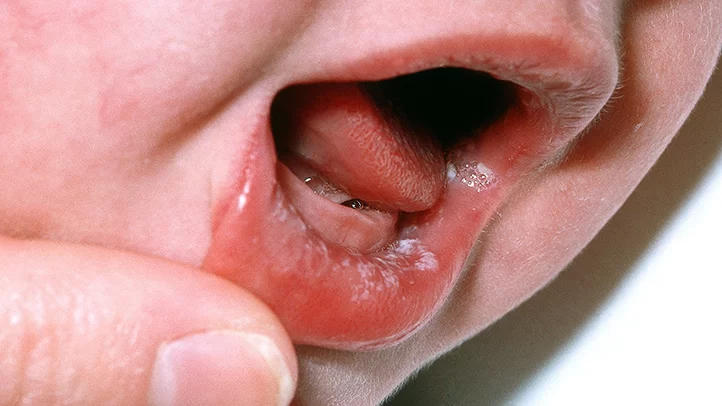
- Understanding Oral Thrush in Infants and Children
- Recognizing Symptoms and Causes of Oral Thrush
- Safe Treatment Options for Oral Thrush
- Home Remedies and Care Practices to Support Healing
- Preventing Recurrence Through Hygiene and Lifestyle Adjustments
- Real-Life Experiences and Professional Advice
1. Understanding Oral Thrush in Infants and Children
Oral thrush, medically known as oropharyngeal candidiasis, is a common fungal infection caused by the overgrowth of Candida yeast in the mouths of infants and children. It typically appears as creamy white patches on the tongue, inner cheeks, gums, or roof of the mouth. While it can occur at any age, infants and young children are particularly susceptible due to their developing immune systems and other contributing factors.
Unlike adults, infants cannot easily communicate discomfort, making early recognition and treatment crucial to prevent complications such as feeding difficulties or irritability. Understanding the nature of oral thrush helps caregivers act promptly and with confidence.
1.1 Why Infants and Children Are Vulnerable
The balance of microorganisms in a child's mouth can be easily disrupted by factors such as antibiotic use, breastfeeding challenges, or an immature immune system. This imbalance allows Candida yeast to proliferate unchecked. Additionally, children using pacifiers or bottles may introduce more opportunities for yeast growth if hygiene is insufficient.
1.2 When to Seek Medical Attention
Though oral thrush often resolves with proper care, persistent or severe cases require pediatric consultation. Signs like refusal to feed, spreading lesions, or recurrent infections necessitate professional evaluation and treatment.
2. Recognizing Symptoms and Causes of Oral Thrush
Identifying oral thrush early helps in managing the infection before it worsens. Common symptoms include white or yellowish patches that resemble cottage cheese, soreness or redness underneath these patches, fussiness during feeding, and sometimes mild bleeding if patches are scraped.
The primary cause is an overgrowth of Candida albicans, a fungus naturally present in the mouth but controlled under normal conditions. Factors that disturb this balance include antibiotic treatments, steroid medications, dry mouth, or immune deficiencies.
2.1 How Feeding Practices Influence Thrush Development
Breastfeeding mothers can inadvertently pass Candida to their infants if nipple infections are present. Similarly, bottle-fed babies may develop thrush if bottles and nipples are not sterilized properly. This highlights the importance of hygiene for both baby and caregiver.
2.2 Role of Immune System and Other Health Conditions
Infants born prematurely or with weakened immune defenses are more prone to oral thrush. Recognizing these risk factors helps parents stay vigilant and engage in preventive care.
3. Safe Treatment Options for Oral Thrush
Treating oral thrush in infants and children requires gentle and effective approaches that minimize discomfort and promote healing. The most common medical treatments involve antifungal medications prescribed by healthcare professionals. These may come in liquid form to be applied inside the mouth, ensuring direct contact with the affected areas.
3.1 Prescription Antifungal Medications
Nystatin oral suspension is frequently recommended due to its safety profile and effectiveness. Parents apply it several times daily for about one to two weeks. Other options may include miconazole gel or fluconazole for more resistant cases. Always follow the pediatrician's instructions carefully.
3.2 Importance of Completing the Treatment Course
Even if symptoms improve quickly, completing the full course prevents recurrence and ensures all fungal cells are eradicated. Skipping doses or stopping early can lead to persistent infection or resistance.
4. Home Remedies and Care Practices to Support Healing
Alongside prescribed treatments, several home care strategies can ease symptoms and aid recovery. Good oral hygiene adapted for infants and children is essential.
4.1 Gentle Cleaning and Moisturizing
Caregivers can gently wipe the infant’s mouth with a soft, damp cloth after feedings to reduce residue and yeast buildup. Avoid harsh scrubbing which may cause pain or bleeding.
4.2 Sterilization and Hygiene of Feeding Equipment
Ensuring bottles, nipples, pacifiers, and toys are regularly sterilized minimizes reinfection risks. This simple practice plays a critical role in treatment success.
4.3 Supportive Dietary Considerations
For older children, limiting sugary foods that promote yeast growth is advisable. For breastfeeding mothers, maintaining nipple hygiene and possibly treating nipple thrush can prevent back-and-forth infection cycles.
5. Preventing Recurrence Through Hygiene and Lifestyle Adjustments
Preventing oral thrush recurrence involves consistent hygiene, careful feeding practices, and addressing underlying health factors. Since Candida thrives when oral environments are disturbed, maintaining balance is key.
5.1 Monitoring Antibiotic Use
Since antibiotics can disrupt normal flora, they should be used only when necessary and always with medical supervision. If an infant is on antibiotics, increased oral hygiene vigilance can help prevent fungal overgrowth.
5.2 Encouraging Regular Pediatric Dental Visits
Early dental care offers professional guidance tailored to your child's oral health needs. Dentists can spot early signs of thrush or other conditions and recommend timely interventions.
5.3 Utilizing Resources Like Dentistry Toothtruth
For trusted products such as antifungal treatments, infant oral care tools, and expert advice, Dentistry Toothtruth offers a comprehensive selection suited for children’s delicate needs. Their curated resources help caregivers make informed choices with confidence.
6. Real-Life Experiences and Professional Advice
Stories from parents navigating oral thrush in infants highlight the emotional and practical challenges involved. For example, Emma, mother of a 3-month-old, shared how early identification and adherence to treatment eased her baby's discomfort within days. Consulting with her pediatrician and accessing quality oral care products from Dentistry Toothtruth made a significant difference.
6.1 The Value of Support Networks and Education
Joining parenting groups or online forums can provide encouragement and tips from others who have successfully managed oral thrush. Combined with professional advice, this support strengthens caregivers’ ability to respond effectively.
6.2 Expert Recommendations
Pediatricians and dental professionals emphasize early detection, gentle treatment, and prevention strategies to safeguard children’s oral health. They recommend always consulting healthcare providers before starting any treatment and maintaining open communication during the care process.
Treating oral thrush in infants and children requires patience, care, and informed choices. By understanding the condition, recognizing symptoms, applying safe treatments, and maintaining good oral hygiene, parents can help their little ones recover quickly and avoid future outbreaks. For the best products and professional guidance, Dentistry Toothtruth stands as a reliable resource dedicated to children's oral wellness.







 West Covina Dental Group and Orthodontics4.0 (274 review)
West Covina Dental Group and Orthodontics4.0 (274 review) Avella Family and Implant Dentistry4.0 (425 review)
Avella Family and Implant Dentistry4.0 (425 review) Dr. Chona F. Yu, DDS4.0 (18 review)
Dr. Chona F. Yu, DDS4.0 (18 review) South Mississippi Smiles - Gulfport4.0 (454 review)
South Mississippi Smiles - Gulfport4.0 (454 review) ClearChoice Dental Implant Center4.0 (314 review)
ClearChoice Dental Implant Center4.0 (314 review) Fair Oaks Orthodontics5.0 (29 review)
Fair Oaks Orthodontics5.0 (29 review) The Importance of Oral Health Education During Pregnancy for a Healthy Pregnancy
The Importance of Oral Health Education During Pregnancy for a Healthy Pregnancy Best Tips for Brushing Your Teeth Properly for Healthy Gums: Essential Techniques for Oral Health
Best Tips for Brushing Your Teeth Properly for Healthy Gums: Essential Techniques for Oral Health Why Skipping Dental Checkups Can Lead to Bigger Oral Health Problems
Why Skipping Dental Checkups Can Lead to Bigger Oral Health Problems Advantages of Porcelain Dental Restorations
Advantages of Porcelain Dental Restorations How Can Diabetes Cause Tooth and Gum Problems? Preventing and Managing Oral Health Issues
How Can Diabetes Cause Tooth and Gum Problems? Preventing and Managing Oral Health Issues Healthy Habits for Promoting Good Oral Health and Hygiene: Tips for a Healthy Smile
Healthy Habits for Promoting Good Oral Health and Hygiene: Tips for a Healthy Smile